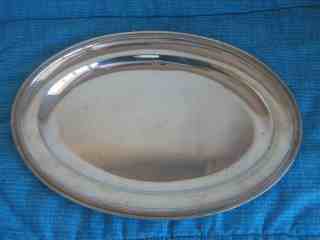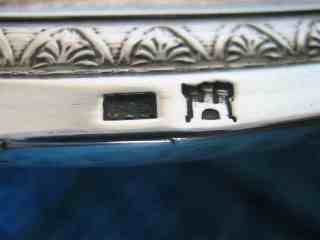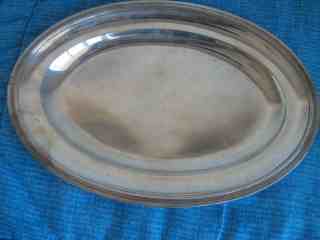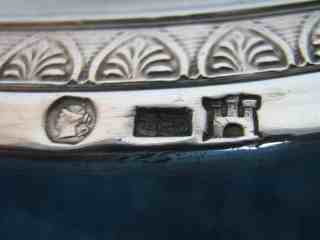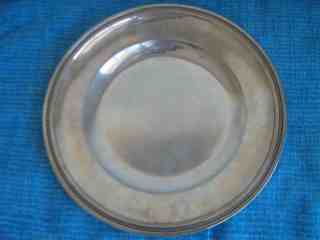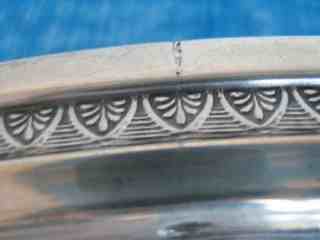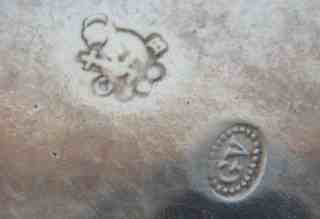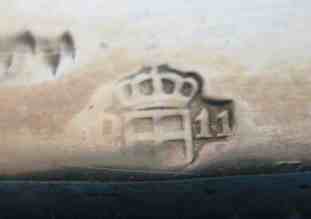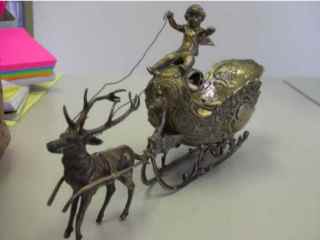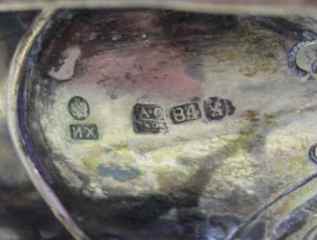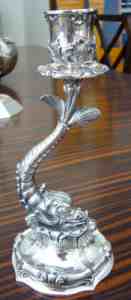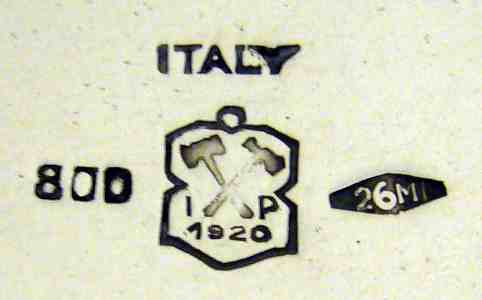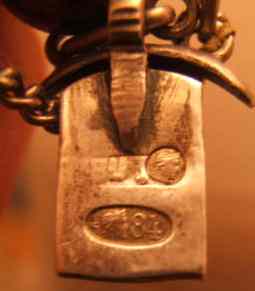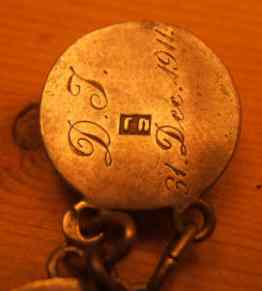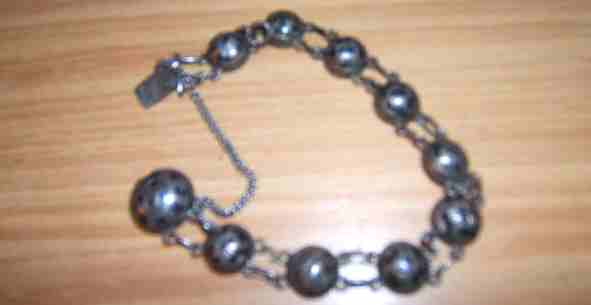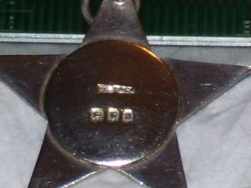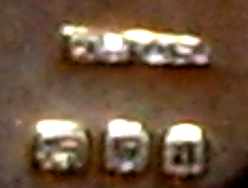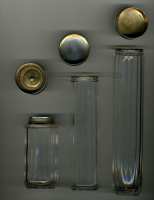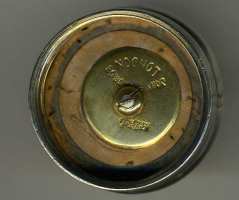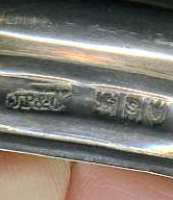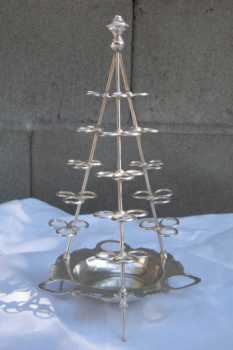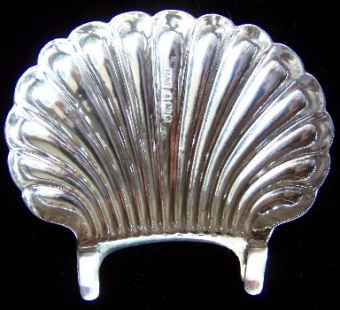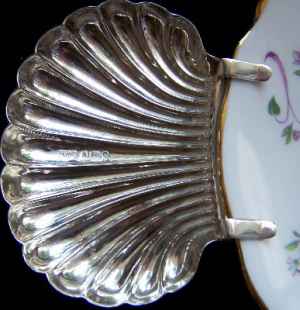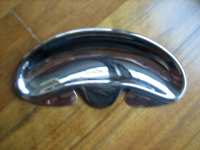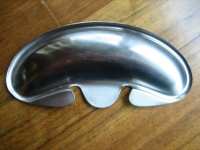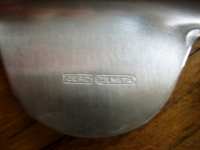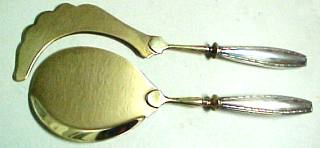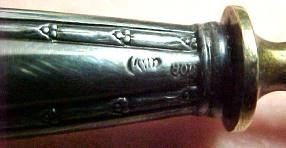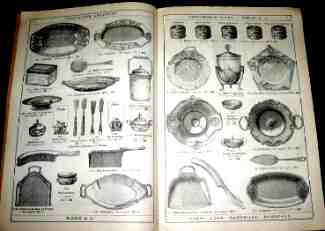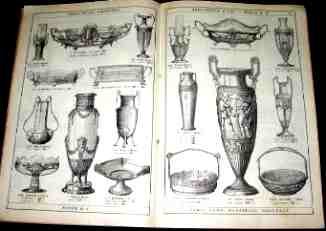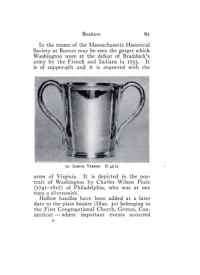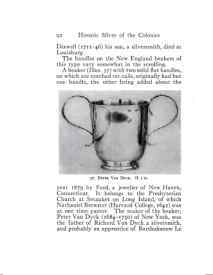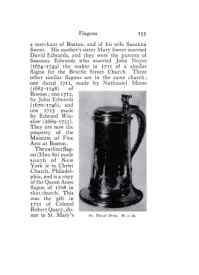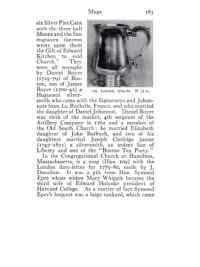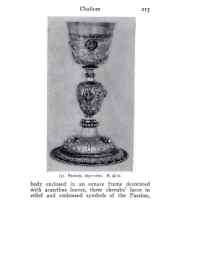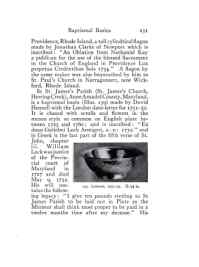 newsletter # 54 - NOVEMBER 2008
newsletter # 54 - NOVEMBER 2008www.ASCASonline.org
email: silverassociation@yahoo.it
YOUR GUIDE TO NOVEMBER NEWSLETTER:
articles new members
members' window
|
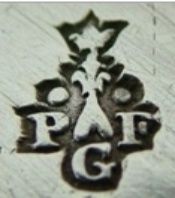
Christophe Ginter presents: |
New members
Welcome to new ASCAS members:
Andrea Cairnes - USA
Patrice Doherty - USA
Gordon James Key - England UK
Rodolfo Lopez Oyanadel - Chile
Angela Terrazzini - Italy
Ampelio Vimercati - Italy
Alberto Viscardi - Italy
Mari Wilenius - Finland
Members' Window # 54
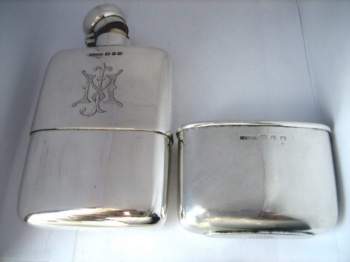
|
Mail to ASCAS: e-mail silverassociation@yahoo.it
Your trays are indeed Italians and were made in Genova
(Genoa) and Torino (Turin)
The two oval trays are marked with:
-castle: the so called "torretta", identifying assay office of
Genova
-rectangle near the torretta; it's the date in three digits. The
date may be 81? for 181? (...1810 to ...1814)
-female head toward left with 2 (only on the small tray): not
identified. In my opinion this was a mark used by French
Government during its occupation of Genova (Genoa
became a French Department)
The round tray is marked with:
-GV into an oval: assayer's mark of Giuseppe Vernoni, son of
Michele Antonio, active in Torino (Turin) assay office from 1778
to 1824
-image of Saint Carlo Borromeo and letters GB aside: silversmith
Giuseppe Balbino, Torino 1775-1814 (Donaver-Dabbene, mark #
168). Giuseppe Balbino was a supplier of the Court of Savoy.
-crowned shield with cross and D 11 aside: used after the fall
of Napoleon, from 1814 to 1824, in the Kingdom of Sardinia to
mark large works of 916/1000 silver (silver fineness 11 denari).
Giorgio Busetto
Anne Adams writes:
... I am trying to identify the marks on this Russian silver
sleigh and I was hoping you could be of help. I used the
www.silvercollection.it website to identify the marks, but I am
unsure of my findings. I believe them to be:
Assayer - Aleksandr Alekseevich Smirnov
Year- 18?3
Silversmith Mark- Ivan Petrovich Khlebnikov
Town - Imperial Court Silversmith Imperial Cipher
I am attaching pictures of the markings if you would be so kind
to help me, I would appreciate it.
Sincerely,
Anne Adams
I'm not fully sure that the A.K mark (in Cyrillic)
belongs to Khlebnikov, as your item was assayed in Moscow while
Khlebnikov was active in St.Petersburg (Postnikova-Loseva doesn't
quotes A.K silversmiths with Moscow town mark and
www.silvercollection.it omits to identify A.K silversmith with
Moscow town mark). Anyway, Geoffrey Watts in his Russian
Silversmiths' Hallmarks (2006) writes that Khlebnikov
transferred to Moscow from St.Petersburg in 1871 (but doesn't
illustrate his mark) and possibly this is his mark.
A.C (Cyrillic) assayer can be A. Svyechin (Moscow 1862-1875) or
Alexander Smirnov (Moscow 1878-1895).
By the way, I'm the owner also of
www.silvercollection.it (it's my private website).
Giorgio Busetto
Garry Lillyman writes:
... I hope that you may be able to help me to more clearly
identify the maker and date of a pair of Italian candlesticks I
recently purchased. Attached are images of the maker's mark and
of a candlestick.
I would assume that they were made in Milan between 1944-1968,
perhaps 1940’s as the silver standard mark is not in an oval
cartouche.
The sticks are 17.5cm tall, good quality, heavy for their size
and possibly cast.
I look forward to any additional information you may be able to
provide.
Regards,
Garry Lillyman
The maker is Ilario Pradella, Via Tadino 44, Milano. The
mark refers to the period post 1944 until 1970.
Giorgio Busetto
Antony Priest writes:
... my name is Tony Priest, of Exmouth Devon, UK. Please see
attached file for photos of a bracelet that I have owned for a
number of years now. I have spent hours searching the internet
for information on it, and all I can work out is that it is from
Moscow or St. Petersburg?
Any other information could shed any other light. I would very
much appreciate it.
Kind regards
Tony
The bracelet bears St.Petersburg mark (kokosnik head
toward right, 1908-1926).
Maker's mark G.P in Cyrillic isn't registered in
Postnikova-Loseva book. A GP mark (without dot between) belongs
to Grigory Pankratym, (St. Petersburg 1874-1908).
Giorgio Busetto
Andrew McCarthey writes:
... I was wondering if you might be able to help me, I have a
small piece of silver in the shape of a 5 pointed star, It
measures 1 3/4 inches from point to point, it has the lion
passant and the leopard's head for London and the date letter "a"
for 1916. There is also the maker's mark HTL&Co but I can not
seem to find them anywhere: I have been told that it might be
HENRY.T.LAMB but I am not sure.
Is there any chance that you might be able to help me?
Thanking you in advance for your assistance.
A.McCarthey
Your photo isn't well readable. Anyway I believe that
your identification may be confirmed.
The mark HTL&Co into a rectangle was registered in London on
24th October 1905 by William Isaac Stiffen, "sole partner" of H.T.
Lamb & Co, gold & silver workers.
Giorgio Busetto
Tammi Kiser-Sparks writes:
... I have three glass bottle with silver tops that have what I
think are English marks.
The silver is marked with JP & Co and on the inside of one of
the silver lids are the words London, John Po..nd, JP& Co.
I don’t know what the word after John is but I suspect it is the
word Pound. There are also a lion's face, the letter S and and
lion’s profile on the silver tops.
I have taken photos of each and have attached them to this email.
Any information you can provide would be greatly appreciated.
Tammi Kiser-Sparks
The maker is indeed John Pound & Co (this mark was
registered in 1904 and 1905).
The firm was founded by Henry Pound in 1823.
Giorgio Busetto
I have no knowledge about the use of this piece (an
epergne?). Any help would be greatly appreciated.
Giorgio Busetto
Replies to questions
| Sue Tiffin
receives these replies about her "pip tray"
(see October Newsletter) Pamela Coates writes: ... I had these items years ago, and purchased it
directly from lady who told me they were for "ashes" as
they were individual ashtrays that clipped on side of
saucer for when "ladies" had tea.
|
| Joyce
Colpetzer receives these replies about her
serving set
(see October Newsletter) Karin Sixl-Daniell writes: ... This is an ice-cream serving set,
specifically for ice cream bombes; similar sets
can be found on Ebay from time to time
Nathalie Bourreau writes:
|
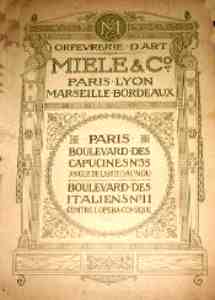
|
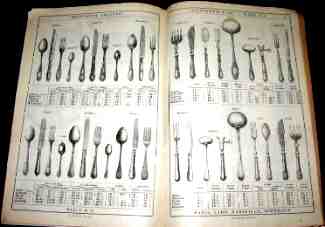
|
"A WORD per MONTH"
In this column we
presents an abstract from a page of the "What is?
Silver Dictionary"
courtesy of
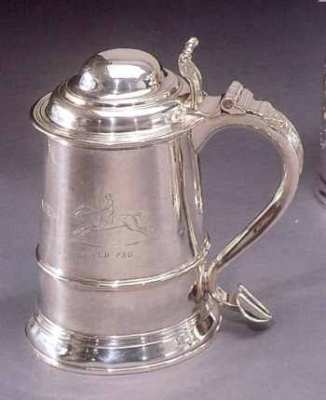
|
TANKARDOriginally the name "tankard" meant
a vessel for carrying water, but about
the middle of the 16th century it came
to denote an article that was
principally utilized for holding beer.
|
"A BOOK ON MY SHELF"
In this column we
present books, new or ancient, dealing with
silver in all its aspects (history, marks,
oddities...). This isn't a "book review" but
only a fair presentation of some useful "tools"
that anyone may have in the shelf of his
bookcase.
ASCAS members are invited to contribute to this
column
(click to enlarge images)
The "book on the shelf" of this month
presents:
HISTORIC SILVER OF THE COLONIES AND ITS
MAKERS
by Francis Hill Bigelow
The MacMillan Company
New York - 1917
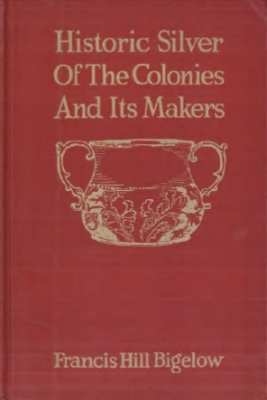 |
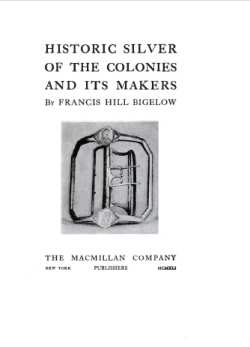 |
Closing our NOVEMBER 2008 edition of ASCAS Newsletter I hope you have appreciated its content.
Your comments, suggestions and advice will be of great help.
My thanks to Stephanie Andersen, Anne Adams, Pamela Coates, Jayne Dye, Christophe Ginter, Tammi Kiser-Sparks, Garry Lillyman, Andrew McCarthey, Robert Massart, José Luis Muñoz, Antony Priest, Karin Sixl-Daniell, JoAnne Wilkinson, for their invaluable contributions.
Giorgio Busetto
Secretary
ASCAS is a community of people having a
common interest in antique silver.
|

